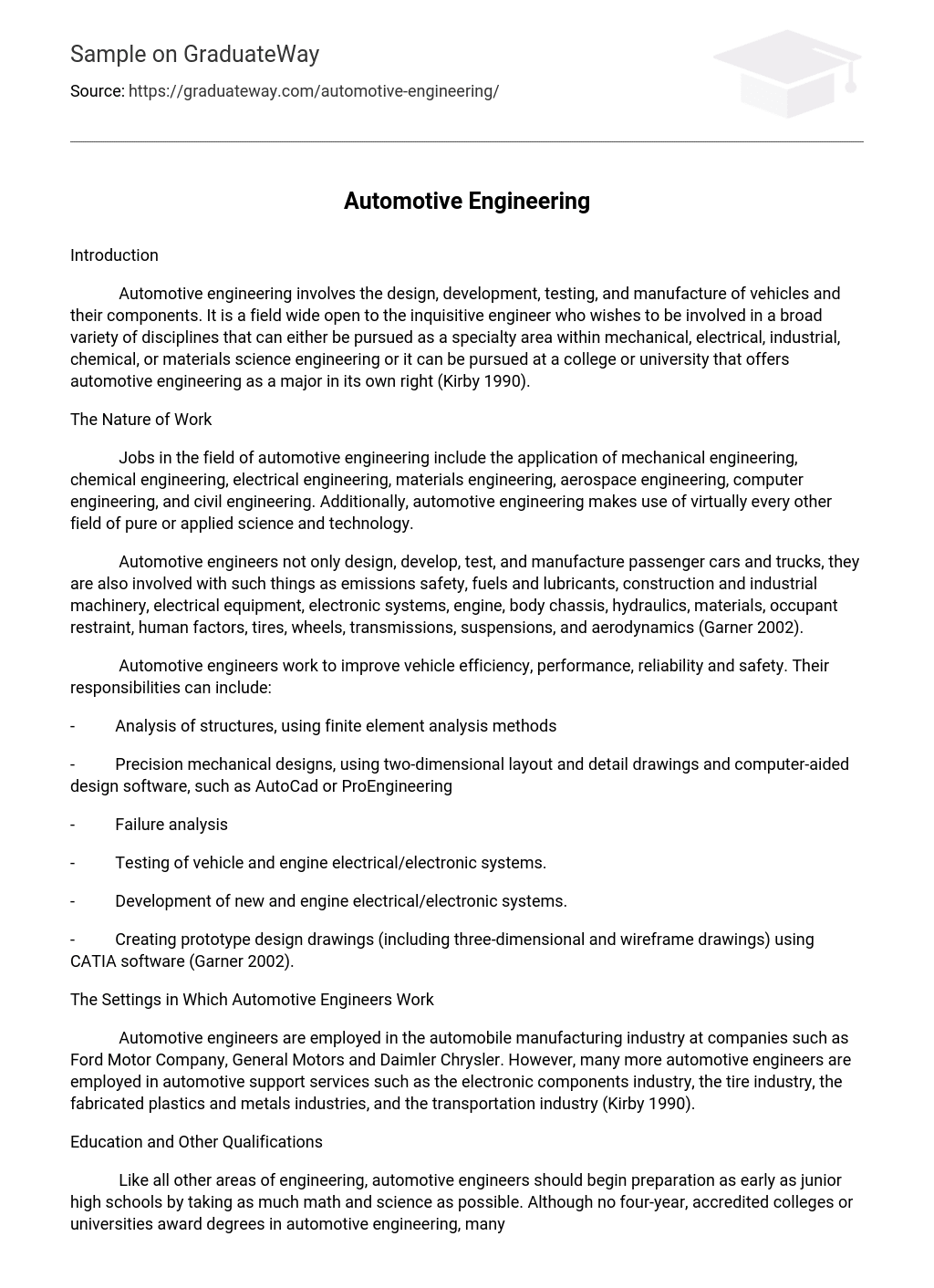Introduction
Automotive engineering involves the design, development, testing, and manufacture of vehicles and their components. It is a field wide open to the inquisitive engineer who wishes to be involved in a broad variety of disciplines that can either be pursued as a specialty area within mechanical, electrical, industrial, chemical, or materials science engineering or it can be pursued at a college or university that offers automotive engineering as a major in its own right (Kirby 1990).
The Nature of Work
Jobs in the field of automotive engineering include the application of mechanical engineering, chemical engineering, electrical engineering, materials engineering, aerospace engineering, computer engineering, and civil engineering. Additionally, automotive engineering makes use of virtually every other field of pure or applied science and technology.
Automotive engineers not only design, develop, test, and manufacture passenger cars and trucks, they are also involved with such things as emissions safety, fuels and lubricants, construction and industrial machinery, electrical equipment, electronic systems, engine, body chassis, hydraulics, materials, occupant restraint, human factors, tires, wheels, transmissions, suspensions, and aerodynamics (Garner 2002).
Automotive engineers work to improve vehicle efficiency, performance, reliability and safety. Their responsibilities can include:
– Analysis of structures, using finite element analysis methods
– Precision mechanical designs, using two-dimensional layout and detail drawings and computer-aided design software, such as AutoCad or ProEngineering
– Failure analysis
– Testing of vehicle and engine electrical/electronic systems.
– Development of new and engine electrical/electronic systems.
– Creating prototype design drawings (including three-dimensional and wireframe drawings) using CATIA software (Garner 2002).
The Settings in Which Automotive Engineers Work
Automotive engineers are employed in the automobile manufacturing industry at companies such as Ford Motor Company, General Motors and Daimler Chrysler. However, many more automotive engineers are employed in automotive support services such as the electronic components industry, the tire industry, the fabricated plastics and metals industries, and the transportation industry (Kirby 1990).
Education and Other Qualifications
Like all other areas of engineering, automotive engineers should begin preparation as early as junior high schools by taking as much math and science as possible. Although no four-year, accredited colleges or universities award degrees in automotive engineering, many of the traditional areas of engineering (mechanical engineering, chemical engineering, electrical engineering, materials engineering, aerospace engineering) provide related course offerings. Colleges and universities involved in automotive engineering will usually have active student chapters of the Society of Automotive Engineers (SAE).
There are more than 380 SAE chapters at universities worldwide. Over fifteen thousand student members participate in engineering projects, attend free section meetings, and benefit from free technical papers and publications. Many students build vehicles to compete in some of SAE’s annual collegiate design competitions (2005).
List of References:
2005. Guide to College Majors: Everything You Need to Know to Choose the Right Major. New York: The Princeton Review.
Garner, Geraldine O. 2002. Careers in Engineering. 2nd Edition. New York: McGraw-Hill Professional.
Kirby, Richard Shelton. 1990. Engineering in History. New York: Courier Dover Publications.





